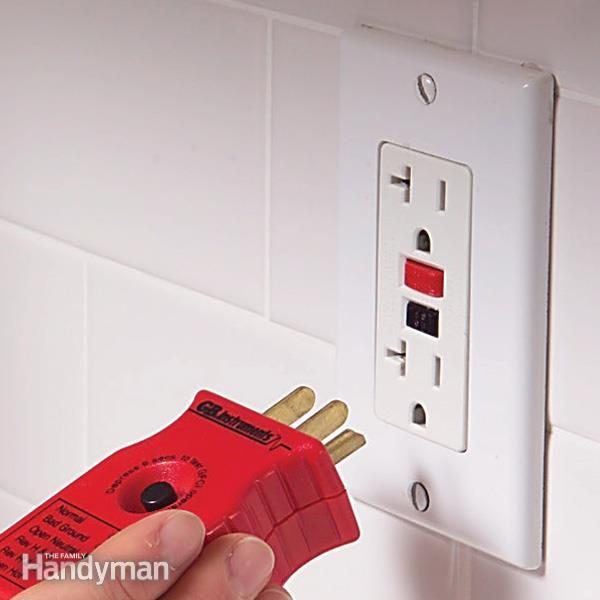GFCIs save lives. Learn how to test your GFCIs two ways, with these instructions.
Our editors and experts handpick every product we feature. We may earn a commission from your purchases.
Learn more.


GFCIs save lives. Learn how to test your GFCIs two ways, with these instructions.
Our editors and experts handpick every product we feature. We may earn a commission from your purchases.
Learn more.
Ground-fault circuit interrupter (GFCI) receptacles — often called GFCI outlets — protect people from electrical shock. This protection is required by the National Electric Code (NEC) when the likelihood of electrical shock is greater than usual. Generally, this is in bathrooms, kitchens, basements and other places where water could be present.
GFCI protection works by monitoring the current that flows through the receptacle. In a normal scenario, current coming into and leaving the receptacle is equal. Deviation by as little as 4 to 6 milliamps can indicate a dangerous situation called a ground fault. When this happens, the GFCI immediately shuts off power to the receptacle.
The NEC requires GFCI receptacles be listed (approved) by a laboratory such as UL. According to current standards, GFCI receptacles must have an internal monitoring system that checks GFCI effectiveness. Before 2015, consumers had to physically push the TEST button on the device to know if it still provided protection. Not many people actually do this, so today's GFCI receptacles have a light to alert you if they ever fail the internal testing. They also deny power to the device at the end of its life, indicated by a different colored light.
Even with these safety updates, you should still test your GFCI periodically to ensure the mechanical tripping mechanism works. Models without an indicator light should be tested with a special tester, available at any home improvement center. Post-2015 models can be tested with the TEST button alone. Here's how to do it.
“Like any device, GFCIs will wear out over time or fail without showing obvious signs,” says Daniel Vasilevski, director of Bright Force Electrical. “This is why you should test them, especially in older homes or in areas where moisture is more frequent. If you find a bad one, this is not something you should ignore because a malfunctioning GFCI cannot protect you from electrical shocks.”
Also note that if a GFCI trips, it can shut off power not just to the outlet but often to other outlets connected downstream in the circuit, says Vasilevski. “If you have multiple outlets not working, check for a tripped GFCI before assuming there is a bigger issue,” he says.
If the GFCI is bad, the first thing you should do is stop using the outlet. Unplug any devices or appliances connected to it and avoid attempting to reset it repeatedly, says Vasilevski.
If you are experienced with electrical work, you can probably replace it yourself, using a similar GFCI outlet. Make sure to safely disconnect the power and then ensure the new one is wired correctly and grounded.
“GFCI’s are very important to keep you from being shocked, so should never be substituted with a normal outlet,” says Todd Tripp, a home improvement expert with JustAnswer.
If you are not confident with handling electricity, it’s best to call an electrician.
“Incorrectly replacing a GFCI outlet will lead to improper wiring, grounding issues or even a risk of fire,” says Vasilevski. “A professional will also test the outlet as well and check the circuit to make sure there are no underlying issues that may have caused the GFCI to fail in the first place.”